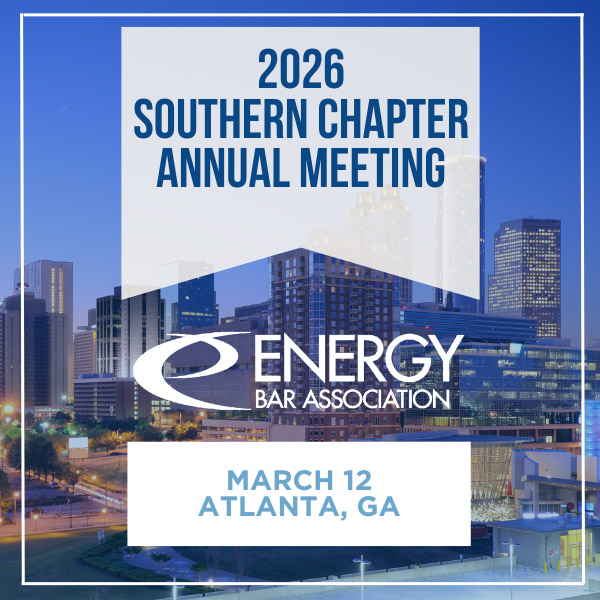ERCOT CEO Pablo Vegas says the grid operator’s proposal to build more than $30 billion of extra-high-voltage transmission infrastructure is part of a “new era in planning” and just an incremental step from its normal practices.
Speaking in front of the ISO’s Board of Directors Feb. 4, Vegas said the $33.9 billion and $32.6 billion estimates for 765-kV and 345-kV backbones, respectively, “effectively” amount to about $5 billion a year.
“Last year, we approved almost $3.8 billion of transmission costs, so it’s a little bit of a step up from what we’re doing,” he said, “but it’s not a radical step up from what we are already used to developing and building here in the ERCOT grid.”
Vegas said the massive buildout, which includes ERCOT’s first foray into 765-kV infrastructure, is necessary to add generation to a grid that is maxed out. The two plans are intended to address industrial and electrification load growth in West Texas’ oil-rich Permian Basin. (See 765-kV Lines in West Texas Inch Closer to Reality.)
“We see that the current system that we’re operating is really getting close to its full utilization capacity,” he said. “Not only do we see the load growth being very significant, but we have seen the rapid increase in supply … significant growth in solar, significant growth in batteries recently on the grid. That requires transmission to carry that supply and then to the grid.”
Vegas said the increase in generic transmission constraints (GTCs), which are used to monitor and control flows using market-based mechanisms to maintain stability and other non-thermal reliability limits, is “evidence” of the grid’s full use.
“[GTCs] have grown over the last several years,” he said.
ERCOT says its Texas 765-kV Strategic Transmission Expansion Plan will require 1,443 fewer miles of transmission and provide $229 million in annual consumer energy cost savings and $28 million more a year in production cost savings. The EHV lines will increase power transfer capability by 600 MW to 3,000 MW and reduce annual energy losses by 560 GWh.
The Texas Public Utility Commission last year approved ERCOT’s Permian Basin plan, which includes both the 765-kV and 345-kV plans. The PUC has said it will decide between the two plans and their import paths into the Permian by May 1. (See Texas PUC Approves Permian Reliability Plan.)
ERCOT also has filed with the PUC a regional transmission plan.
“765-kV systems have been around for decades, have been used throughout the United States for decades and in other parts of the world,” Vegas said. “There is a robust experience set in the engineering procurement and construction world, as well as a robust supply chain globally to support the infrastructure that’s needed to develop 765. That is something Texas could benefit from when we looked at the comparison for the broader regional transmission plan.”
SPP earlier in February also approved its first 765-kV project in its history, a $1.69 billion, 293-mile circuit in Southwestern Public Service Co.’s Texas and New Mexico service territory. (See related story, SPP Board Approves 8 Urgent Short-term Projects.)
Staff Still Looking at Braunig
ERCOT General Counsel Chad Seely told the board that staff still is working to execute a reliability-must-run contract with San Antonio municipality CPS Energy for one of three aging gas plants slated for retirement this year, even as its costs continue to rise.
Seely said CPS’s original estimated budget for Braunig Unit 3 has risen from $82 million to $93 million due to inspection outage, equipment and compliance costs. (CPS submitted an additional $1.5 million budget increase Feb. 3 as it “fine-tunes” overall labor costs.) The all-in costs, which include an incentive factor and fuel expenses, have gone from $90 million to $105 million.
“Our analysis still shows that it is cost-effective to move forward with Unit 3 relative to the overall value of lost load from a system-wide perspective if we had to end up in a load-shed situation,” Seely said.
ERCOT is close to executing an RMR contract with CPS in advance of the inspection outage, scheduled to begin in early March, Seely said. Discussions are ongoing over two addendums addressing CPS’ environmental emissions exceedances and communications and work approvals during the RMR contract’s term. That will start the clock ticking on a 90-day exit plan for Unit 3; staff plan to present the plan to directors during their April 8 meeting.
Costs for the smaller Braunig units 1 and 2 also have risen slightly to $54 million as submitted by CPS and $60 million for all-in costs. ERCOT is continuing talks with CPS, CenterPoint Energy and LifeCycle Power about using mobile generators as an alternative to RMRs for the other two Braunig units. Units 1 and 2 have a combined maximum summer rating of 392 MW, while Unit 3 has a 412-MW summer rating.
Seely said ERCOT still believes the LifeCycle mobile generators are the most “cost-effective reliability solution” for Units 1 and 2. He said CenterPoint has indicated it is willing to release the generators to CPS for two years. The Houston utility leased the 15 32-MW generators from LifeCycle for $800 million over eight years.
LifeCycle has estimated it will cost $26 million to move the generators to San Antonio, while CPS has projected costs of $27 million to connect the units to substations. ERCOT says the cost estimates are subject to change as discussions continue.
“This whole thing is so wasteful,” Stoic Energy principal Doug Lewin said as he followed the meeting on Substack. “Perhaps [Elon Musk’s Department of Government Efficiency] can look into ERCOT,” he cracked.
The grid operator has scheduled a special meeting Feb. 25 to discuss the alternative proposal with the board.
CPS told ERCOT last year it planned to retire the Braunig units, which date to the 1960s, in March. However, the grid operator said the plant’s units were needed to address transmission constraints and congestion in the San Antonio area. (See ERCOT Evaluating RMR, MRA Options for CPS Plant.)
3 Tx Projects Endorsed
The board approved three Tier 1 reliability projects — those with capital costs over $100 million — previously endorsed by the ISO’s Reliability and Markets Committee (R&M) during its Feb. 3 meeting and the Technical Advisory Committee. The projects, located east and south of Dallas, were submitted by Oncor Electric Delivery and have a combined cost of $380.6 million:
-
- $103.5 million rebuild of a 345/138-kV switch in Forney.
- $118.9 million reconstruction of 76 miles of 345-kV lines south of Dallas.
- $158.2 rebuild of 40 miles of 138kV- and 69-kV lines and two 345/138-kV transformers south of Dallas.
The directors also approved R&M’s recommendation to add ERCOT’s COO (currently Woody Rickerson) as one of the delegates responsible for monitoring and reporting the market’s credit risk to the board, and the ISO’s annual methodologies for determining minimum ancillary services in 2025. The methodology limits the amount of a resource’s responsive reserve service using primary frequency response to 157 MW.
Board Approves 17 Revision Changes
The directors unanimously approved 11 nodal protocol revision requests (NPRRs), two changes each to the Nodal Operation Guide (NOGRRs) and Planning Guide (PGRRs) and single other binding document (OBDRR) and system change requests (SCR) on their consent agenda:
-
- NPRR1246, NOGRR268, OBDRR052, PGRR118: Inserts terminology associated with energy storage resources (ESRs) in the appropriate places throughout the protocols, aligning provisions and requirements for ESRs with those already in place for generation resources and controllable load resources. This NPRR applies to ESRs in the future single-model era and should be implemented simultaneously with NPRR1014 (BESTF-4 Energy Storage Resource Single Model).
- NPRR1243: Revises requirements regarding notice and disclosure of protected information and ERCOT Critical Energy Infrastructure Information (ECEII).
- NPRR1250: Updates the protocols to comply with state law retiring the renewable portfolio standard program (ERCOT will continue to administer a voluntary renewable energy credit trading program).
- NPRR1251: Implements several improvements to the firm fuel supply service’s (FFSS) cost recovery process by clarifying qualified scheduling entities representing FFSS resources are able to accelerate restocking reserved fuel using existing fuel inventories or based on new purchases.
- NPRR1252: Permits ERCOT to provide ECEII or protected information materials to vendors or prospective vendors without a pre-notice of the provision to a market participant’s vendor or prospective vendor, if they have executed an appropriate confidentiality agreement. The NPRR adds a definition of “ERCOT research and innovation” (R&I) and “ERCOT R&I partner” to clarify notice requirements prior to those entities receiving protected information from ERCOT.
- NPRR1253: Includes wholesale storage load charging-load to the dataset ERCOT provides through its inter-control center communications protocol.
- NPRR1257, NOGRR271: Establishes a maximum limit on the amount of responsive reserve that a resource can provide using primary frequency response. Proposes an initial static limit of 157 MW, intended to be reevaluated annually as part of the ancillary services methodology review and approval process.
- NPRR1258: Removes protocol language duplicative of requirements that are detailed in Management Activities for the ERCOT System and provides model update requirements designed to ensure network data is in common information model format and uses the required naming convention.
- NPRR1259: Clarifies that retail transaction response timing requirements will not include the duration of a planned and approved ERCOT retail system outage.
- NPRR1260: Reinstates requirements applicable to controllable load resources that inadvertently were removed during the approval and implementation of NPRR863 (Creation of ERCOT Contingency Reserve Service and Revisions to Responsive Reserve).
- NPRR1261: Removes references to TAC-approved congestion revenue right (CRR) transaction limits and per-CRR account holder transaction limits, replacing the existing limits with a framework specific to each auction to maximize market bidding and liquidity while minimizing the risk of performance issues and/or triggering a transaction adjustment period.
- PGRR117: Revises the Planning Guide to reflect the PUC’s rulemaking on certification criteria, which requires the ISO to conduct a biennial assessment of the ERCOT grid’s reliability and resiliency in extreme weather scenarios and recommend transmission projects to address the assessment’s resiliency issues.
- SCR828: Increases the number of resource certificates permitted for email domains within the Resource Integration and Ongoing Operations system.



